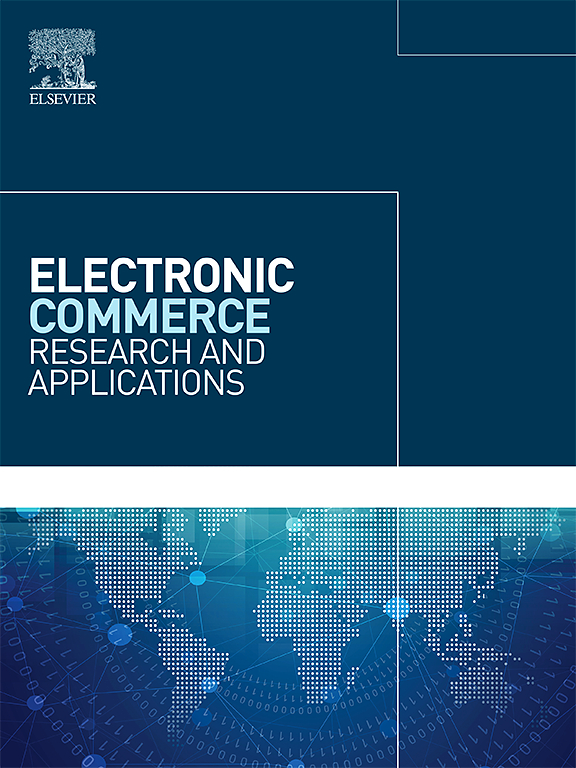IntentRec:通过顺序推荐的对比校准来结合潜在的用户意图
IF 5.9
3区 管理学
Q1 BUSINESS
Electronic Commerce Research and Applications
Pub Date : 2025-06-24
DOI:10.1016/j.elerap.2025.101522
引用次数: 0
摘要
预测用户将与之交互的下一个项目是顺序推荐(SR)的核心任务。传统的方法主要关注于道具购买序列的建模模式,但往往无法揭示用户行为背后的潜在动机。为了克服这一限制,我们引入了IntentRec,这是一种新的SR框架,旨在整合从用户撰写的评论中提取的潜在用户意图信号。与传统的孤立处理项目序列的模型不同,IntentRec通过对比学习在共享嵌入空间中对齐它们的表示,弥合了评论内容和行为数据之间的语义差距。回顾序列按时间顺序排列的文本反映了用户的想法,作为丰富的意图来源,在训练过程中融合到项目序列表示中。为了确保实时推荐场景的实用性,我们的方法在推理时排除了评论输入,承认评论自然发生在项目交互之后。IntentRec使用BERT(一种预先训练的语言模型)从文本评论中提取细微的用户意图,并引入交叉注意增强的对比损失,将评论衍生的信号与基于项目的偏好紧密耦合。在四个广泛使用的SR基准上进行的大量实验表明,IntentRec始终优于八个最先进的基准。进一步的消融研究证实了基于评论的用户意图在提高顺序推荐准确性方面的关键作用。本文章由计算机程序翻译,如有差异,请以英文原文为准。
IntentRec: Incorporating latent user intent via contrastive alignment for sequential recommendation
Predicting the next item a user will interact with is a core task in sequential recommendation (SR). Traditional approaches predominantly focus on modeling patterns in item purchase sequences, yet often fall short in uncovering the underlying motivations behind user behavior. To overcome this limitation, we introduce IntentRec, a novel SR framework designed to incorporate latent user intent signals extracted from user-written reviews. Unlike conventional models that treat item sequences in isolation, IntentRec bridges the semantic gap between review content and behavioral data by aligning their representations in a shared embedding space through contrastive learning. Review sequences chronologically ordered text reflecting users’ thoughts serve as a rich source of intent, which is fused into the item sequence representation during training. To ensure practicality in real-time recommendation scenarios, our method excludes review inputs at inference time, acknowledging that reviews naturally occur after item interactions. IntentRec employs BERT, a pre-trained language model, to extract nuanced user intent from textual reviews, and introduces a cross-attention-enhanced contrastive loss to tightly couple review-derived signals with item-based preferences. Extensive experiments conducted on four widely-used SR benchmarks demonstrate that IntentRec consistently outperforms eight state-of-the-art baselines. Further ablation studies confirm the crucial role of review-based user intent in improving sequential recommendation accuracy.
求助全文
通过发布文献求助,成功后即可免费获取论文全文。
去求助
来源期刊

Electronic Commerce Research and Applications
工程技术-计算机:跨学科应用
CiteScore
10.10
自引率
8.30%
发文量
97
审稿时长
63 days
期刊介绍:
Electronic Commerce Research and Applications aims to create and disseminate enduring knowledge for the fast-changing e-commerce environment. A major dilemma in e-commerce research is how to achieve a balance between the currency and the life span of knowledge.
Electronic Commerce Research and Applications will contribute to the establishment of a research community to create the knowledge, technology, theory, and applications for the development of electronic commerce. This is targeted at the intersection of technological potential and business aims.
 求助内容:
求助内容: 应助结果提醒方式:
应助结果提醒方式:


